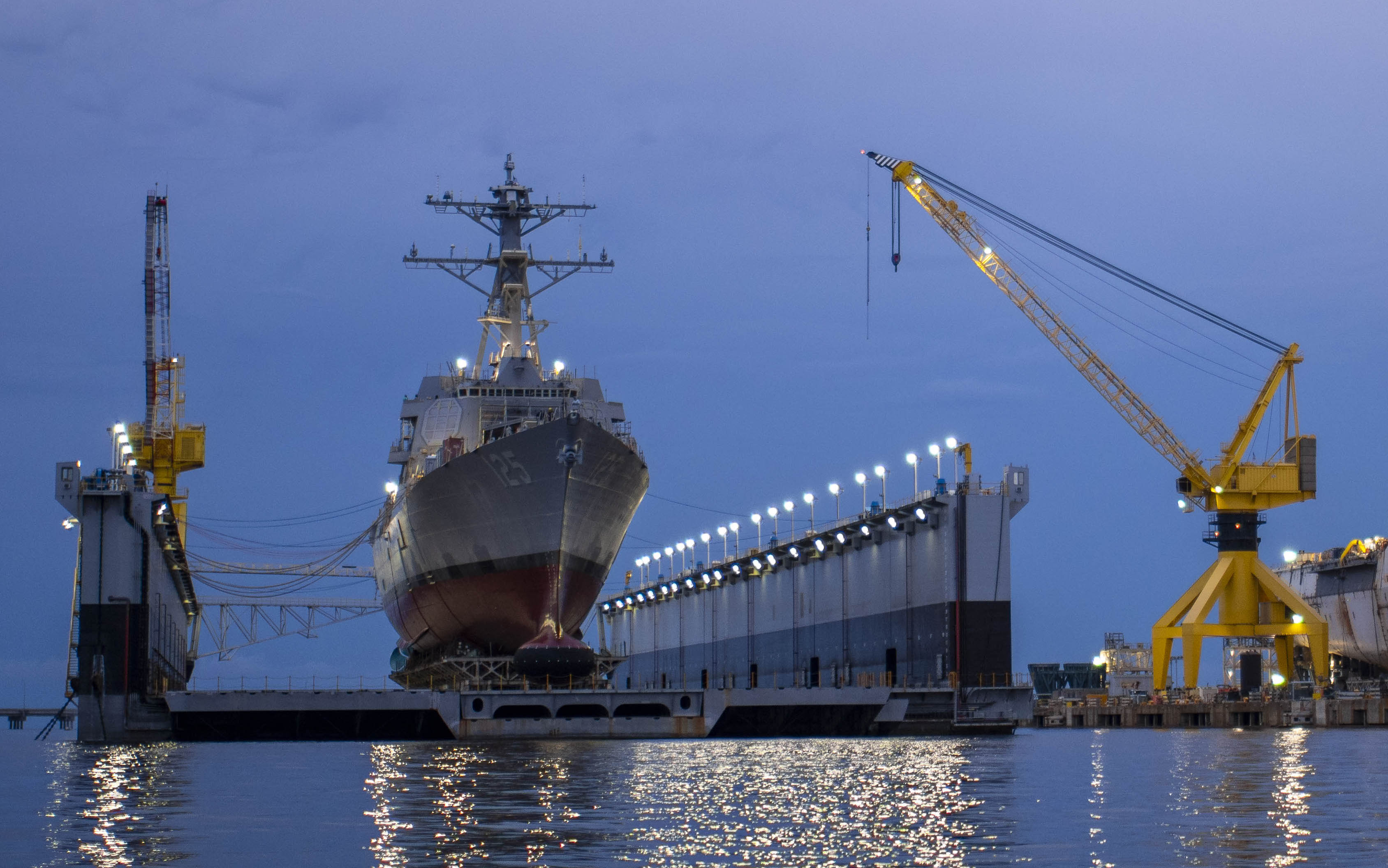
The Navy is pursuing a nine-ship multi-year procurement plan for its next batch of Arleigh Burke Flight III destroyers, according to service budget documents.
While the current proposal is to buy nine destroyers, the Navy has the option to purchase an additional ship to make it a 10-ship buy across the five-year spending plan.
“The Navy is requesting authority to award Multi-year procurement (MYP) contracts for FY 2023 – FY 2027 for nine ships. The FY2023 budget also includes one option ship for a total procurement profile of 10 ships in FY 2023 – FY 2027,” the Navy’s Fiscal Year 2023 budget documents read. “The FY 2023 budget request reflects estimated savings for nine firm ships associated with [economic order quantity] procurement and an MYP strategy.”
The service’s Future Years Defense Program (FYDP) shows the Navy buying two destroyers per year from FY 2023 through FY 2027, amounting to 10 ships.
But Republican lawmakers may push for a third destroyer in the FY 2023 defense policy bill, a legislative source told USNI News. Should that plan move forward, lawmakers would want the Navy to buy 11 ships in the multi-year procurement, USNI News understands.
Rear Adm. Paul Schlise, the Navy’s top surface warfare requirements office (OPNAV N96), has said he is committed to buying two large surface combatants per year to help the service move from the Flight III Arleigh Burkes to its next-generation destroyer, or DDG(X).
The Navy is seeking $49.7 million in research and development money for DDG(X) concept development in FY 2023, according to the budget documents. The service is also asking for another $176.6 million to create an Integrated Power and Energy System Test Facility at Naval Surface Warfare Center Philadelphia Division so the Navy can use a land-based testing site for the DDG(X) propulsion system as it works on the ship design.
“DDG(X) will integrate non-developmental systems into a new hull design that incorporates platform flexibility and the space, weight, power and cooling (SWAP-C) to meet future combatant force capability/system requirements that are not achievable without the new hull design,” according to the documents. “The DDG(X) platform will have the flexibility to rapidly and affordably upgrade to future warfighting systems when they become available as well as have improved range and fuel efficiency for increased operational flexibility and decreased demand on the logistics force.”
Rep. Mike Gallagher (R-Wis.), who sits on the House Armed Services Committee, argued earlier this year that the service needs to buy two large surface combatants per year for the next decade as a cushion while the Navy develops DDG(X).
“What I propose is the department should commit to funding two large surface combatants a year for – let’s say 10 years – during which the transition from Flight III … to DDG(X) occurs,” Gallagher said at a January conference. “Congress in turn will commit to fully funding the DDG(X) program and from there, the Navy will need to provide a plan to both Congress and industry to move forward from two Flight IIIs per year to two DDG(X)s per year over a three to five year transition. I know that the next-gen DDG won’t be online for a 2020s fight, but my point here is you can build a battle force 2025 without neglecting our longer term modernization priorities.”
The new multi-year procurement plan for more Flight IIIs would also follow the previous multi-year, in which the Navy bought two ships per year between FY 2018 and FY 2022.
Former acting Navy Secretary Thomas Harker first disclosed plans to pursue another multi-year procurement for the destroyers last summer during hearings over the FY 2022 budget proposal. At the time, the Navy only sought one destroyer despite a contract to buy two that year to finish that last multi-year procurement contract. Congress added the second destroyer back in when it wrote the FY 2022 defense spending and policy bills.





